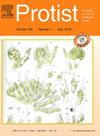Effects of Glacial Flour on Marine Micro-plankton: Evidences from Natural Communities of Greenlandic Fjords and Experimental Studies
Abstract
Meltwater runoff from glaciers carries particles, so-called glacial flour that may affect planktonic organisms and the functioning of marine ecosystems. Protist microplankton is at the base of marine food webs and thus plays an important role in sustaining important ecosystem services. To assess the effect of glacial flour on photoautotrophic, heterotrophic and mixotrophic microplankton, the spatial distribution of these trophic groups was studied in four Greenlandic fjords during summer. The results suggest that the abundance of the autotrophic microplankton was affected by the glacier meltwater due to reduced light penetration and nutrient availability. The abundance of heterotrophic and mixotrophic microplankton were not apparently affected by the glacier meltwater. Incubation experiments were conducted on the natural population and in laboratory cultures of two mixoplanktonic ciliate species. The experiments on the natural population revealed that none of the trophic groups were affected by the suspended material at concentrations up to 50 mg L−1. The experiments on cultures gave no indication that glacial flour was ingested by the mixoplanktonic ciliates. Growth rates of cultured ciliates were not affected by the glacial flour addition. These results suggest that heterotrophic and mixotrophic microplankton are not affected by glacial flour as much as autotrophic microplankton.

 求助内容:
求助内容: 应助结果提醒方式:
应助结果提醒方式:


